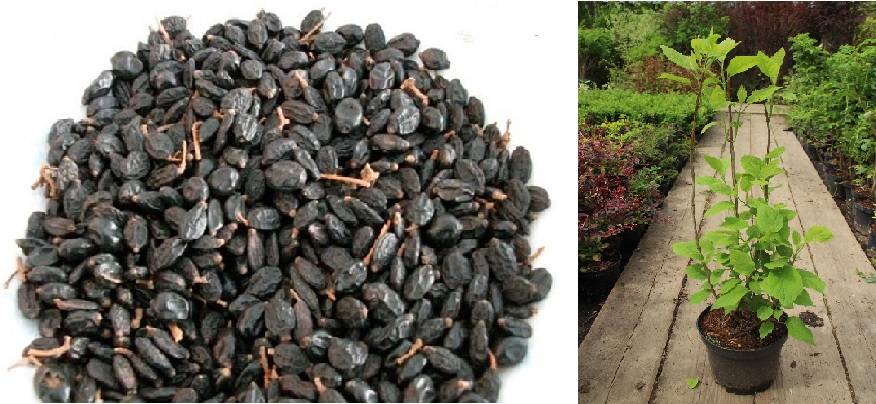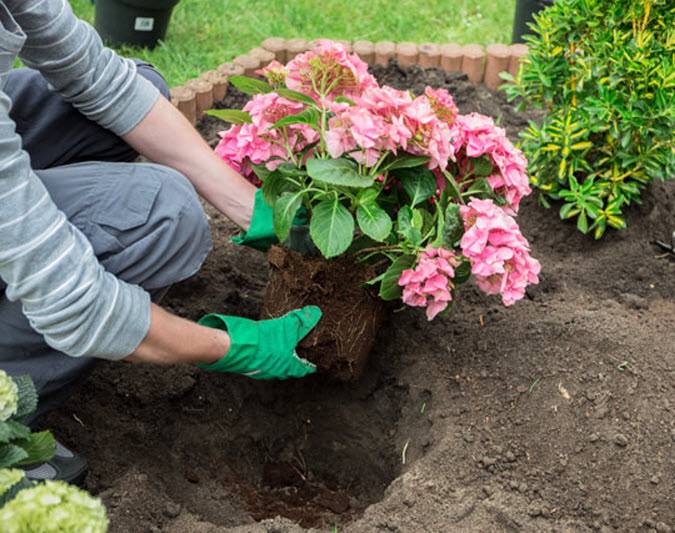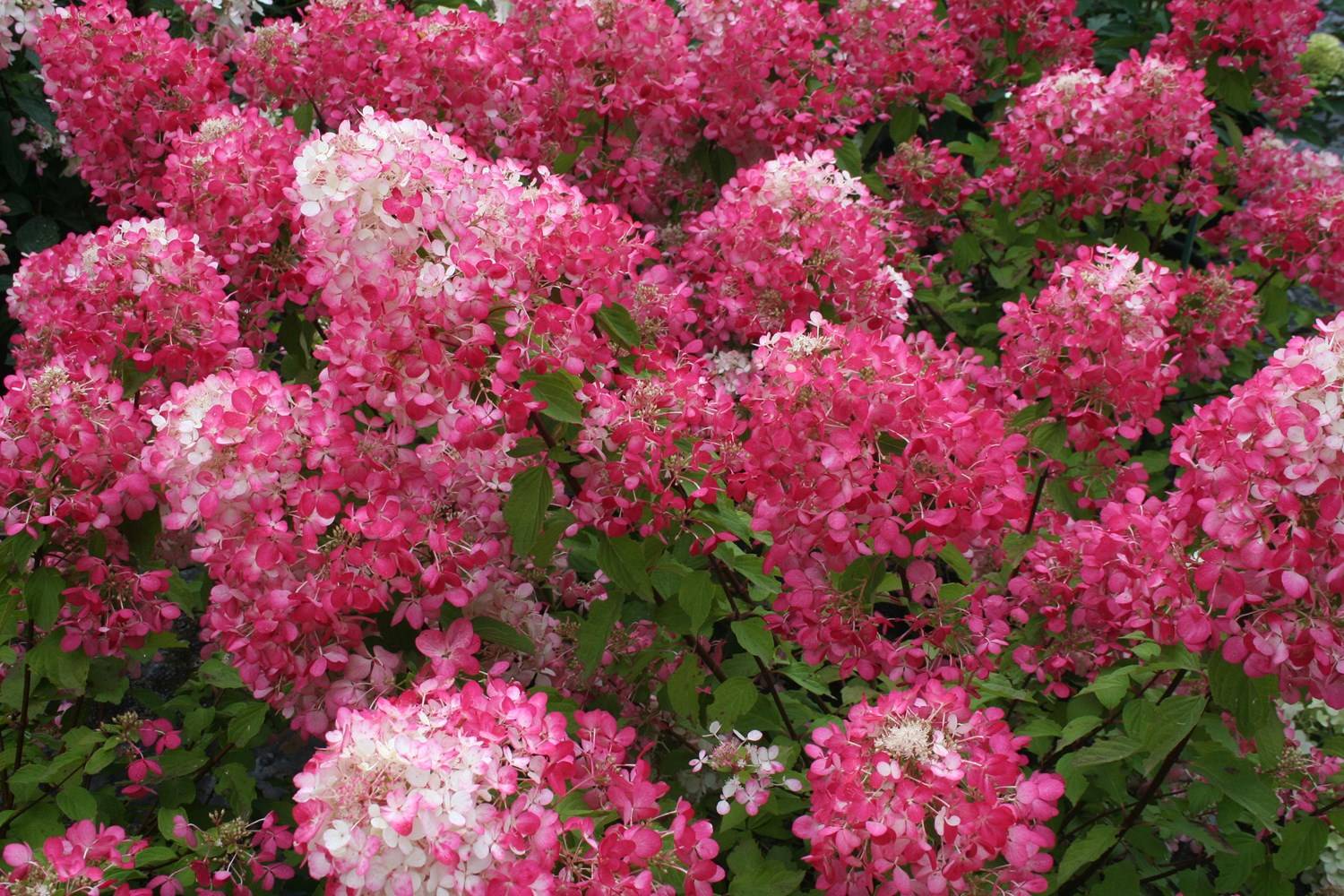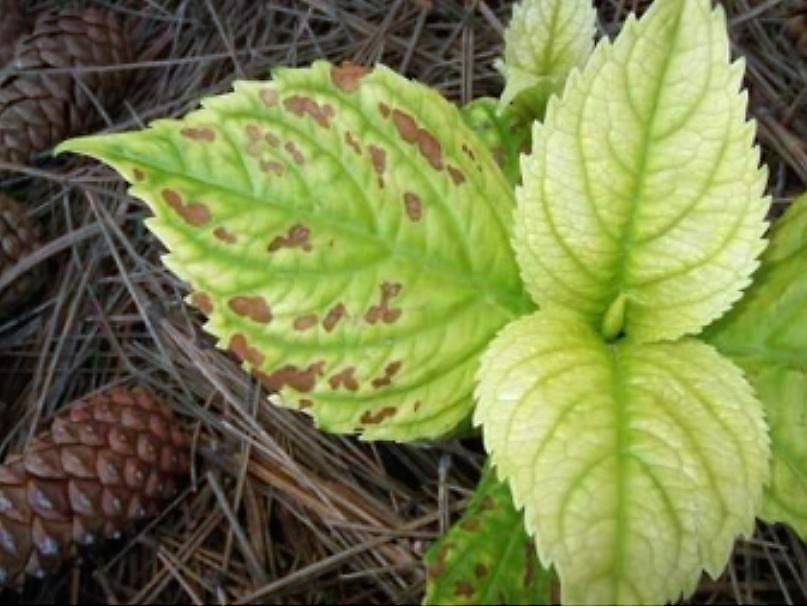Hydrangea Pink Diamond - description of the variety and its cultivation
Content:
The land is rich in various plants. Among the most popular are roses, peonies, violets, but more and more often you can find hydrangea (lat.Hydrangea). For the first time, shrubs were brought to Europe in the XIV century, and there were only two varieties. Now there are more than 50 types. The most attractive is Pink Diamond.
Description of the Pink Diamond hydrangea variety
Hydrangea Pink Diamond (translated from English as “pink diamond”) is a real find for adding beauty to a summer cottage or to decorate a city.
Hydrangea beckons with its appearance. Despite its attractiveness, it grows to an enormous size (up to the second floor of a residential building) and takes the form of a bush. In addition, Pink Diamond is a perennial plant and can delight with its flowers for more than a decade.
Over time, the stems and branches of the plant become stronger. The leaves are elliptical. When touched, roughness is felt, the color of the foliage is matte green.
Large conical inflorescences attract with their originality. Because of this shape, the plant resembles a panicle in appearance, which is why it belongs to the panicle type (lat.Paniculata).
Such an abundance of flowers makes it possible to create a huge number of compositions.
Hydrangea Pink Diamant, as the variety is also called, tolerates climate change, so it can be planted in parks and squares. Also has good regenerative properties, hydrangea easily regenerates shoots. It is heat resistant and can withstand very low temperatures.
Hydrangea is quite unpretentious. It is enough to regularly feed, water, and the shrub will delight for many years.
Outdoor planting hydrangeas Pink diamond
Having set out to plant this hydrangea variety, you need to know the algorithm and the intricacies of growing.
Seat selection
When landing, there should not be any special difficulties. The main thing is to choose the right place and soil.
Hydrangea thrives in moderate shade, so it is preferable to plant where there is low light, such as next to a building, tree or fence. It must be remembered that this hydrangea grows widely, it needs an appropriate area.
The main factor for the growth and development of the shrub is the soil.
Landing algorithm
Hydrangea paniculata Pink Diamond is planted in two ways - by seeds and seedlings.
For landing, you need to carry out the following steps:
- Dig holes 30-50 cm wide.
- Place stones, brick fragments or other objects at the bottom as drainage.
- Add water.
- Place a seedling in the middle of the hole. Leave the root collar not buried, and cover the rest with soil.
- Drizzle with water and cover with sawdust or pine needles mulch.
The ideal time for sowing seeds is autumn.
To plant seeds, you must carry out the following steps:
- Sow the seeds into a box with a mixture of leafy soil, humus, peat and sand.
- As soon as a couple of leaves appear on the seedlings, transplant them into separate pots.
- Transplanting to open ground is allowed after 3 years.
Breeding methods for paniculate hydrangea
There are 3 breeding options:
- cuttings;
- layering;
- dividing the bush.
Green cuttings are obtained from the upper shoots. To begin with, they are placed in the sand, and after a couple of months they are transplanted into a pot with earth. Since the best time to collect cuttings is the beginning of summer, they need to be hidden indoors for the winter, and transplanted into open ground in the spring.
Reproduction with the help of layering occurs before bud break. A small depression is made in the ground, the lower shoots are laid out there and covered with soil. Regular watering of the buried twigs is required. Only after a year is it possible to separate the shoot from the mother bush and plant it in another place.
When dividing a bush, it is necessary to dig up a bush in warm weather and divide its roots into parts. The resulting lobes are washed, trimmed and planted in prepared places.
Care features
The Diamant variety does not require special care. It is enough to know the basic rules for handling hydrangea, then it will grow beautifully.
Shrub pruning
Hydrangea Pink Diamond, like any other plant, needs timely pruning. This not only gives the bush an aesthetic appearance, but also allows it to grow even more lush.
The main pruning occurs in the spring. Deleted:
- dead shoots;
- damaged branches;
- strongly protruding shoots.
Watering
Diamond during growth needs abundant watering. Therefore, in the early stages, watering should be done often in order to exclude possible drying out.
By following simple rules, the shrub will bloom and smell. It is necessary:
- with frequent rains, water once a month with a pair of buckets of water;
- in case of rare rains, water 2-3 buckets every week;
- in dry weather, water 2 times a week.
Watering must be done carefully, as excessive moisture damages the plant.
Top dressing and fertilization
An important measure in the care of this hydrangea of this variety is feeding. As with watering, you need to actively feed it in the spring. Organic and mineral additives are used as fertilizers. Feeding can be divided into three stages:
- in the spring, use saltpeter, peat or chicken droppings;
- in summer - potash and phosphorus fertilizers;
- in the fall, stop feeding to prepare for winter.
Pink Diamond in winter
Hydrangea is cold resistant. If in winter the temperature does not drop below -15 ° C, then the shrub does not need to be covered. Frozen shoots will return to normal in the spring. However, in extreme cold, Diamond needs insulation. This is especially true for young seedlings.
Before the cold weather, you need to carefully lower the branches down and sprinkle with leaves. Cover the ground with foil around the plant. From above, the hydrangea is sprinkled with peat, and the top layer is covered with slate. This will allow the shrubs to survive the winter down to -30 ° C.
Common flower problems
The main problems of the Diamond hydrangea are various diseases and insect pests.
Improper care or lack of it can provoke the appearance of the following ailments:
- chlorosis. The most common disease. The leaves turn yellow and dry out, and the buds lose their usual appearance.This is due to a lack of iron;
- downy mildew. Yellow-green streaks appear on the front of the leaves. On the back there is a purple tint;
- white rot. It starts its journey from the roots. A white bloom is formed, the stems darken. If untreated, the bush will die;
- gray rot. Unlike white rot, it does not affect the roots, but the soft tissues of the plant. They flake off, and after the rain, a gray fluff appears. In dry weather, parts die off and holes form on the leaves;
- rust and ring spots. There is a rapid change in the color of the leaves. These are the rarest diseases. However, if Diamond got sick with them, then it will not be possible to save the bush. You will need to get rid of the infected hydrangea.
All of the above problems, except for the last one, can be eliminated by special means that are sold in stores.
Pink Diamond is a hydrangea that will become a real decoration of the site, wherever it is planted. It is easy to grow, the variety does not require special care, it tolerates severe frosts, and with due attention, the shrub is not afraid of diseases. Pink Diamond takes pride of place among varieties such as Annabelle, Grandiflora, Diamond Rouge, Pink Lady and Pinky Winka.



















